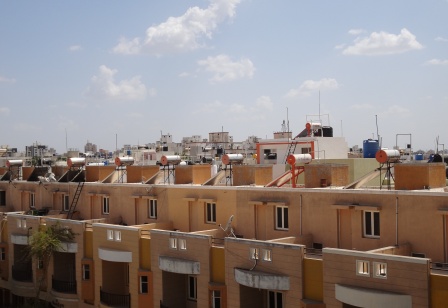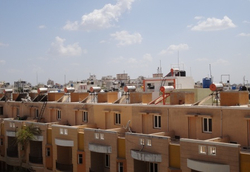Indian Cities work for Low Emissions Development

With both population and economy rapidly growing, India will play a crucial role in any low-carbon scenario. Two model cities, Rajkot and Thane, and six satellite cities were selected to participate in the Urban LEDS program, funded by the European Commission and implemented by UN-Habitat and ICLEI, with the objective of enhancing the transition to low emission urban development in four emerging economy countries. Urban-LEDS stands for Urban Low Emissions Development Strategy. Each strategy defines a pathway for a city to move to a low emission, green and inclusive urban economy. Working Methodology for the cities in the Urban LEDS project is the GreenClimateCities (GCC) Program provided by ICLEI, a comprehensive climate change mitigation program for local governments providing methodology, expert assistance and a network of cities committed to Low Emissions Development.
The cities have been provided with the technical guidance on HEAT+ tool. The preliminary data collection is being carried out in consultation with the core committees formed within the cities. The analysis of data collection and GHG emissions inventory is also being carried out in consultation with the core group. Guidance has been provided to model cities on identification and screening appropriate low carbon solutions. Considering the GHG emissions inventory and cities priorities, preferential areas for low carbon interventions have been identified and feasibility has been determined to take appropriate actions in those areas. Cities have actively taken part in international challenges like Earth Hour City Challenge (EHCC) and have reported information on energy, emissions, commitments and credible actions on the carbonn Climate Registry.
The activities and achievements of the 8 South Asian Urban LEDS cities have been listed below:
Rajkot City has been declared a solar city by the Indian government and has taken various initiatives including installation of rooftop solar power plants in office buildings; installation of energy saving units in street lighting; establishment of a municipal solid waste processing plant; introduction of a Bus Rapid Transit System (BRT). Information collection on energy consumption in the city has been successfully completed and pilot projects have also been identified.
Thane is a part of the Indian “Development of solar cities program” and has already set up a greenhouse gas (GHG) inventory. The two pilot projects that have been identified are Energy Efficient street lighting in Thane Municipal Corporation (through ESCO) and Green building policy development for Thane. Thane Municipal Transport department is also organizing a drivers training program through Petroleum Conservation Research Association (PCRA) for emission reduction through fuel conservation/efficiency and road safety. Thane Municipal Corporation and ICLEI South Asia officials have also participated in an interschool science carnival based on an energy theme ‘Oorja – The Power of Dreams’ where students from various schools presented their projects based on energy conservation, renewable energy and energy efficiency.
In July 2014, an expert visited Panaji, to help the city revise its strategic planning documents and integrate low emission development principles in the spatial planning framework. On its way towards the low-emissions future, Panaji has already achieved outstanding results in waste management: its 4-way waste collection and recycling system set an example in the region. GHG inventory draft report has been compiled and a joint stakeholder workshop has been conducted to present them to the Corporation and discuss the next steps for the project.
Also on waste management, Ward 23 of R.S. Puram in Coimbatore, Urban-LEDS city, has now become a bin-free ward and is marching towards achieving a zero waste status. To get there, the ward adopted several measures, including door to door collection of segregated waste, home composting and management of recyclables. Another important pillar is the active community engagement and determination of the sanitary workers and civic body. Energy data collection for the year 2013-14 is in progress for preparing the GHG emissions inventory.
The Energy and GHG emissions profile final draft report for Pimpri Chinchwad has been completed. A meeting has been held to brief the concerned officials about the project and the draft GHG report. The findings of the report will be presented to the city and other concerned stakeholders to get a go ahead for public release of the city’s GHG inventory and further lead to establishment of LEDS vision.
For Gwalior, Nagpur and Shimla, the energy data collection for the GHG Emission inventory preparation is still in progress.
“The devastating impact of climate change is visible across the globe with rise in number of adverse calamities each year. Necessary political and collective will by National, State & Local Government is required to make serious headway towards addressing the challenges posed by climate change. At Rajkot we have formulated the Climate Core Team which will prepare a roadmap and guide the city towards a low carbon economy” explains Ms. Rakshaben Raghubhai Boliya, mayor of Rajkot.
Click here for further information on the South activities of the Urban LEDS project.



